

Original Article - Year 2011 - Volume 26 -
Cadaver dissection activities in medical residency: experience of the Plastic Surgery Service of Hospital Universitário Professor Edgard Santos, Universidade Federal da Bahia
Atividades de dissecção de cadáveres e residência médica: relato da experiência do Serviço de Cirurgia Plástica do Hospital Universitário Professor Edgard Santos da Universidade Federal da Bahia
ABSTRACT
BACKGROUND: Understanding human anatomy is crucial to the development of accurate surgical techniques. Training with anatomical specimens in the university environment is often insufficient for learning. Thus, the importance of using cadavers to teach anatomy and surgical skills in undergraduate and post-graduate courses is reinforced. This study aimed to report scientific outcomes related to cadaver dissection in the Plastic Surgery Service of Hospital Universitário Professor Edgard Santos (HUPES), Universidade Federal da Bahia, from 2009 to 2011, and the importance of this activity for plastic surgery resident training.
METHODS: We performed a retrospective observational analysis of scientific production resulting from training activities related to cadaver dissection for the period from 2009 to 2011.
RESULTS: We developed activities related to education, research, and extension by means of an agreement signed between the HUPES and the Forensic Medicine Institute of the State of Bahia. Among the educational activities undertaken, dissection activities led to the creation of rich educational materials relevant to the daily practice of resident physicians. With regard to research, several papers have been written, resulting in publications and presentations at scientific meetings. Cadaver dissection also was the subject of a conclusion dissertation and a PhD thesis. Through the partnership, extracurricular training was conducted for medical students as well as members of the Plastic Surgery League of Bahia (LBCP), allowing them to develop skills that had previously not been practiced at the university.
CONCLUSIONS: The Plastic Surgery Department - HUPES obtained considerable gains by developing activities related to cadaver dissection. The service is contributing to progress in the three pillars of education: education, research, and extension.
Keywords: Dissection. Cadaver. Medical education. Internship and residency. Plastic surgery.
RESUMO
INTRODUÇÃO: O adequado conhecimento da anatomia do ser humano é crucial para o desenvolvimento de uma técnica cirúrgica apurada. O treinamento com peças anatômicas no meio universitário, muitas vezes, é insuficiente para o aprendizado. Assim, o uso de cadáveres para o ensino de anatomia e habilidades cirúrgicas na graduação e pós-graduação tem sua importância reforçada. O objetivo deste estudo foi relatar a produtividade do Serviço de Cirurgia Plástica do Hospital Universitário Professor Edgard Santos (HUPES) da Universidade Federal da Bahia, no que se refere às atividades de dissecção de cadáveres realizadas de 2009 a 2011, bem como a importância dessa atividade no treinamento dos residentes do serviço.
MÉTODO: Foi realizada análise observacional retrospectiva da produção do serviço em decorrência das atividades de treinamento em dissecção de cadáveres, no período de 2009 a 2011.
RESULTADOS: Foram desenvolvidas atividades no âmbito de ensino, pesquisa e extensão por meio de convênio firmado entre o Serviço de Cirurgia Plástica do HUPES e o Instituto Médico Legal do Estado da Bahia. Entre as ações pedagógicas empreendidas, a atividade de dissecção proporcionou a criação de um material rico de ensino que inclui diversos retalhos importantes para a prática diária dos médicos residentes. Em relação à pesquisa, foram desenvolvidos diversos artigos científicos que geraram publicações e apresentações em eventos científicos. Essa atividade deu origem, ainda, a uma monografia de conclusão de residência e a uma tese de doutorado. Por meio do convênio firmado, foi realizado estágio extracurricular para os acadêmicos de medicina, membros da Liga Baiana de Cirurgia Plástica (LBCP), em que puderam desenvolver habilidades não praticadas na universidade.
CONCLUSÕES: Pode-se concluir que o Serviço de Cirurgia Plástica do HUPES obteve ganhos consideráveis com o desenvolvimento das atividades de dissecção cadavérica. Isso demonstra que o serviço vem consolidando sua atuação nos três pilares da educação: ensino, pesquisa e extensão.
Palavras-chave: Dissecação. Cadáver. Educação médica. Internato e residência. Cirurgia plástica.
The Plastic Surgery Service of Hospital Universitário Edgard Santos (HUPES), linked to Universidade Federal da Bahia (UFBA), offers a three-year medical residency program in compliance with the standards proposed by the Ministry of Education and with approval of the Brazilian Society of Plastic Surgery.
Activities linked to the surgical center include treatments in the fields of plastic surgery: burns, hand, and craniomaxillofacial surgeries; trauma care; orbital-eyelid surgery; rhinology; complex wound management; and microsurgery and aesthetic surgery.
Cadaver dissection activities are included in compulsory in-service training for first and second year residents, and are optional for third year residents based on an agreement signed with the Forensic Medicine Institute Nina Rodrigues (IMLNR). During this training period, medical residents and undergraduate students of the Plastic Surgery League of Bahia (LBCP) are suitably trained in the recognition of anatomical structures and development of basic surgical techniques, as well as improvement of more complex techniques, among other activities.
There is a gap in the literature about the use of cadaver dissection in training programs for plastic surgery residents. This study aims to report scientific outcomes of cadaver dissection in the Plastic Surgery Service of HUPES-UFBA from 2009 to 2011, and the importance of this activity for plastic surgery resident training.
METHODS
In this study, we analyzed and described documents related to service production from cadaver dissection training activities for the period from 2009 to 2011. We then categorized the results using the framework of education, research, and extension.
RESULTS
We developed different activities in education, research, and extension in conjunction with the plastic surgery service of HUPES-UFBA and IMLNR, described below.
Education
With regard to education, we held training sessions related to cutaneous flaps, fasciocutaneous flaps, myocutaneous flaps, anatomical dissection of the face, rhinoplasty, and the use of prostheses and expanders.
The dissection activities led to the creation of informative educational materials relevant to the daily practice of plastic surgeons. These materials, composed of pictures, videos, and protocols, have been used in regional and national scientific meetings, and also in suture courses designed for UFBA undergraduate students.
Moreover, the learning curve for high-precision surgeries such as open approach rhinoplasties was reduced for residents (Figures 1 and 2).
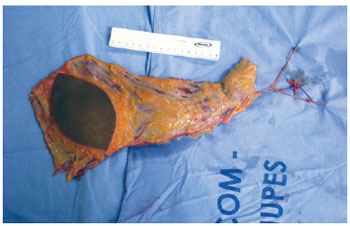
Figure 1 - Myocutaneous flap of the latissimus dorsi muscle with isolation of its pedicle (after release of its origin and insertion).
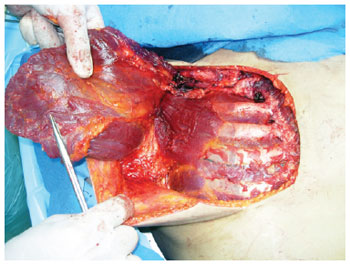
Figure 2 - Flap of the pectoralis major muscle elevated after sectioning of its origin, with visualization of the pectoralis minor muscle and intercostal muscles.
Research
The dissection activities led to significant contribution to scientific research, including national and international papers, as well as presentations at scientific meetings. Anatomical identification activities were also developed using dry human mandible specimens.
Anatomical studies were developed for the craniomaxillofacial areas and the lower limbs. These studies described in detail the anatomies of the mental and mandibular foramen, upper lateral, lower lateral and septal cartilages, and the paths of lower limb nerves.
So far, these studies have yielded three LILACS-indexed national publications, two papers which have been accepted for publication in relevant international journals, and four presentations at medical meetings on plastic and craniomaxillofacial surgery. The development of these research projects enabled academic collaboration among instructors, residents, and medical students1-9.
Further, the dissection activities were the subject of a residency conclusion dissertation and a doctoral thesis of an instructor at Universidade de São Paulo who is affiliated with the Plastic Surgery Service of HUPES10,11 (Figures 3 and 4).
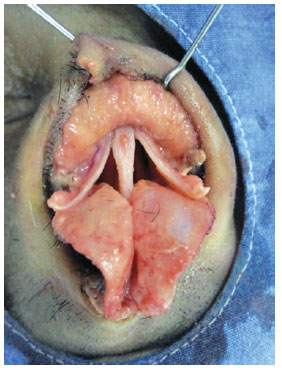
Figure 3 - Anatomical dissection of the nose with exposure of the cartilage.
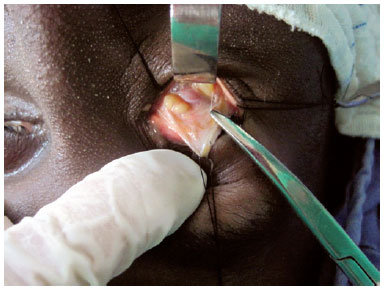
Figure 4 - Inferior oblique muscle visualized between the medial fat pockets and mid-region of the lower eyelid by means of transconjunctival dissection.
Extension
Based on this partnership, it was possible to provide extracurricular training for members of LBCP, an entity linked to the HUPES Plastic Surgery Service. The activity was very important for the students as they were able to develop skills that were not previously taught at the university, and provided subsidies for the implementation of the LBCP sutures course designed for undergraduate students of medical schools in the city of Salvador (Figure 5).
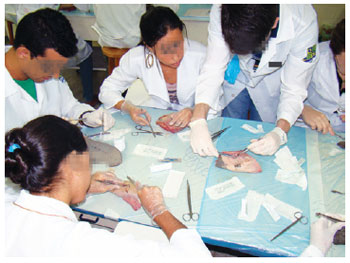
Figure 5 - Sutures course promoted by LBCP.
DISCUSSION
Understanding human anatomy is crucial to the development of accurate surgical techniques. In this context, training with anatomical specimens in a university environment is often insufficient for learning. Further, poor preservation conditions and insufficient numbers of anatomical specimens for a large number of students are some factors contributing to this deficit in training12.
Although there is no consensus, the importance of using cadavers for teaching anatomy and surgical skills is reinforced by several authors for undergraduate students, surgical residents, and those studying pathological anatomy and forensic medicine13-15.
An essential requirement for plastic surgery is mastering flap techniques. In this context, the goal of the training curriculum in the partner institution was to develop skills based on surgical principles and surgical techniques similar to those employed in the surgical center14,16. During procedures in the surgical center, the exposure of anatomical structures is limited due to a reduced surgical field. On the other hand, cadaver dissection enables better visualization of the structures, thereby facilitating greater learning and technical improvement. Therefore, the time required to improve skills related to rhinoplasty and facial surgery is reduced, enabling a shorter learning curve for more complex surgeries.
The partnership between the Plastic Surgery Service of HUPES-UFBA and IMLNR was of great importance in providing an academic foundation for residents and students, as evidenced by the gains achieved in the areas of education, research, and extension. Based on the observed results, cadaver dissection should be encouraged, not only for educational purposes, but also because such activities improve service quality. In other words, such activities promote better patient outcomes.
Few published studies have documented the development of plastic surgery training curricula as we have described. This study may serve as parameter for developing new training programs incorporating cadaver dissection and enhancing those that already exist.
CONCLUSIONS
The Plastic Surgery Department - HUPES benefitted considerably by incorporating cadaver dissection activities into its curriculum. The program demonstrates service evolution in the three pillars of education: education, research, and extension.
REFERENCES
1. Lima DSC, Figuerêdo AA, Gravina PR, Mendonça VRR, Castro MP, Chagas GL, et al. Caracterização anatômica do forame mentual em uma amostra de mandíbulas humanas secas brasileiras. Rev Bras Cir Craniomaxilofac. 2010;13(4):230-5.
2. Pochat VD, Alonso N, Ribeiro EB, Tenório E, Rocha EA, Meneses JVL. Detalhes anatômicos das cartilagens laterais inferiores em afrodescendentes: estudo em cadáveres. Rev Bras Cir Plást. 2011;26(1):54-7.
3. Lima DSC, Figuerêdo AA, Gravina PR, Mendonça VRR, Castro MP, Chagas GL, et al. Estudo anatômico do forame mandibular e suas relações com pontos de referência do ramo da mandíbula. Rev Bras Cir Craniomaxilofac. 2011;14(2):91-6.
4. Pochat VD, Alonso N, Figueredo A, Ribeiro EB, Mendes RS, Meneses JV. The role of septal cartilage in rhinoplasty: cadaveric analysis and assessment of graft selection. Aesthetic Surg J. 2011;31(8):891-6.
5. Pochat VD, Alonso N, Ribeiro EB, Rocha EA, Tenório EG, Meneses JV. Anatomical variations of the upper lateral cartilages and their implications in rhinoplasty. Aesthetic Plast Surg. 2011 (No prelo).
6. Pochat VD, Alonso N, Figueredo A, Ribeiro E, Mendes R, Meneses JVL. A importância da espessura e da área septal nas reconstruções nasais. Rev Bras Cir Plast. 2010;25 Supl.1:3.
7. Alonso N, Pochat VD, Ribeiro E, Tenório E, Rocha E, Meneses JV. Estudo anatômico das cartilagens laterais inferiores em cadáveres: resultados preliminares. Rev Bras Cir Plást. 2010;25 Supl.:14.
8. Pochat VD. Variações anatômicas das cartilagens laterais superiores e suas implicações nas rinoplastias. In: 47o Congresso Brasileiro de Cirurgia Plástica; 2010 Nov., Vitória, ES, Brasil.
9. Lima DSC, Figuerêdo AA, Gravina PR, Castro MP, Mendonça VRR, Chagas GL. Posição do forame mentual em brasileiros: estudo anatômico em mandíbulas humanas secas. Rev Bras Cir Craniomaxilofac. 2010;13(2 Supl.):31.
10. Figuerêdo AA. Importância da localização e variação do forame mandibular e mentual para a cirurgia craniomaxilofacial: estudo anatômico em mandíbulas secas [monografia]. Bahia: Universidade Federal da Bahia, Faculdade de Medicina; 2011. 61p.
11. Torres ALG. Estudo da anatomia do nervo tibial e seus ramos ao nível do terço distal da perna [tese]. São Paulo: Faculdade de Medicina, Universidade de São Paulo; 2011. 58p.
12. Vohra S, Khoshhal K, Kaimkhani Z, Khan MM. Clinical significance of cadaveric dissection for future clinicians. Middle East J Fam Med. 2011;9(2):25-8.
13. Winkelmann A. Anatomical dissection as a teaching method in medical school: a review of the evidence. Med Educ. 2007;41(1):15-22.
14. Prakash, Prabhu LV, Rai R, D'Costa S, Jiji PJ, Singh G. Cadavers as teachers in medical education: knowledge is the ultimate gift of body donors. Singapore Med J. 2007;48(3):186-9.
15. Wong K, Stewart F. Competency-based training of basic surgical trainees using human cadavers. ANZ J Surg. 2004;74(8):639-42.
16. Turner AJ, Mellington A, Ali F. Fresh cadaver dissection for training in plastic surgery. Br J Plast Surg. 2005;58(5):742-3.
1. Full member of the Brazilian Society of Plastic Surgery (SBCP); Doctor; Substitute Professor and Assistant Physician of Discipline of Plastic Surgery at Faculdade de Medicina da Universidade Federal da Bahia (UFBA), Salvador, BA, Brazil.
2. President of the Plastic Surgery League of Bahia, student of medicine at the School of Medicine of Bahia of UFBA, Salvador, BA, Brazil.
3. Aspiring Member in Training of SBCP; Resident Physician at the Plastic Surgery Service at Hospital das Clínicas of UFBA, Salvador, Bahia, Brazil.
4. Full Professor; Associate Professor and Head of Craniomaxillofacial Surgery at Hospital das Clínicas at the School of Medicine of Universidade de São Paulo (HC-FMUSP), São Paulo, Brazil.
5. Full Professor; Assistant Professor and Coordinator of the Discipline of Plastic Surgery at the School of Medicine of Bahia of UFBA, Director of Plastic Surgery League of Bahia, São Paulo, SP, Brazil.
6. Doctorate; Associate Professor and Head of the Discipline of Plastic Surgery at the School of Medicine of UFBA and Supervisor of the Plastic Surgery League of Bahia, Salvador, Bahia, Brazil.
Correspondence to:
Victor Diniz de Pochat
Rua Conselheiro Correa de Menezes, 432 - ap. 201 - Horto Florestal
Salvador, BA, Brazil - CEP 40295-030
E-mail: victor.pochat@gmail.com
Submitted to SGP (Sistema de Gestão de Publicações/Manager Publications System) of RBCP (Revista Brasileira de Cirurgia Plástica/Brazilian Journal of Plastic Surgery).
Paper received: July 25, 2011
Paper accepted: October 25, 2011
Study conducted at the Plastic Surgery Service of Hospital Universitário Edgard Santos (HUPES), linked to Universidade Federal da Bahia (UFBA), Salvador, BA, Brazil.


 Read in Portuguese
Read in Portuguese
 Read in English
Read in English
 PDF PT
PDF PT
 Print
Print
 Send this article by email
Send this article by email
 How to Cite
How to Cite
 Mendeley
Mendeley
 Pocket
Pocket
 Twitter
Twitter